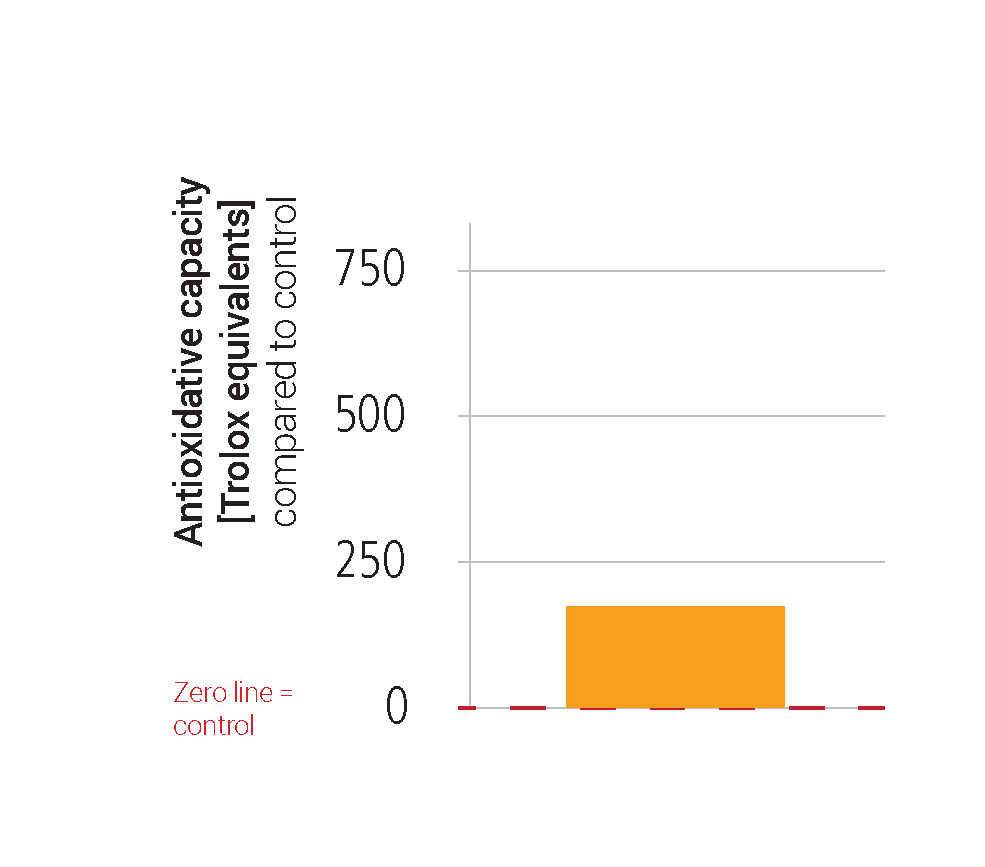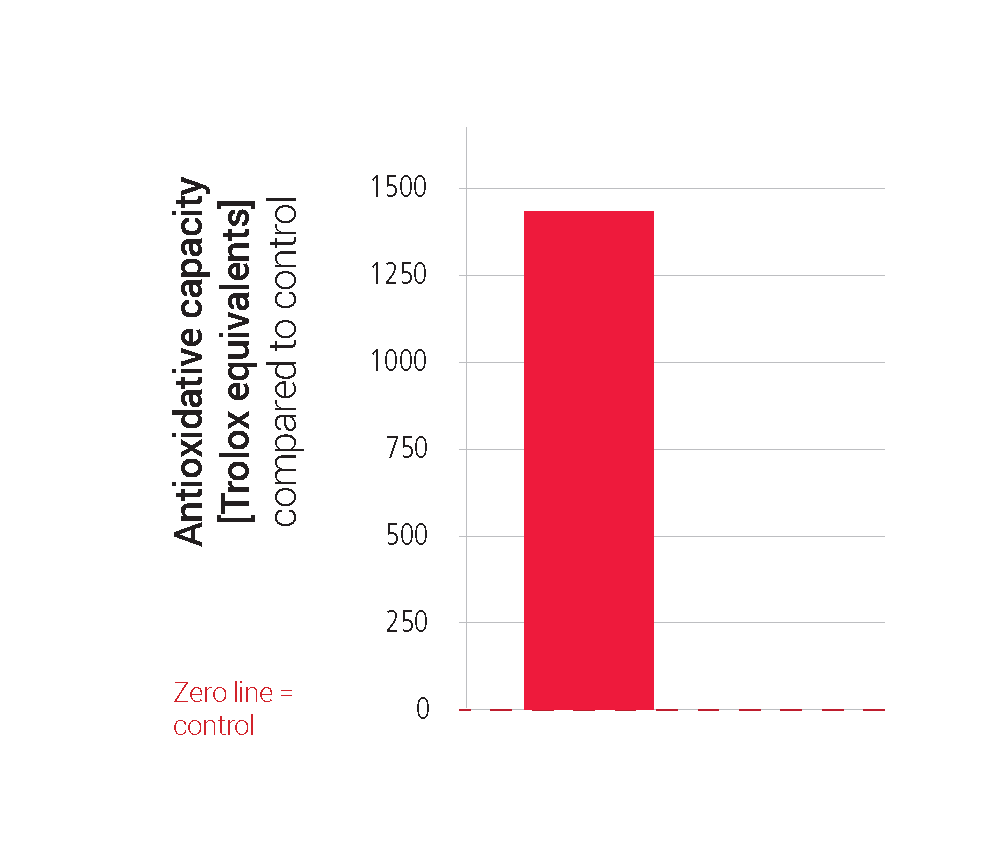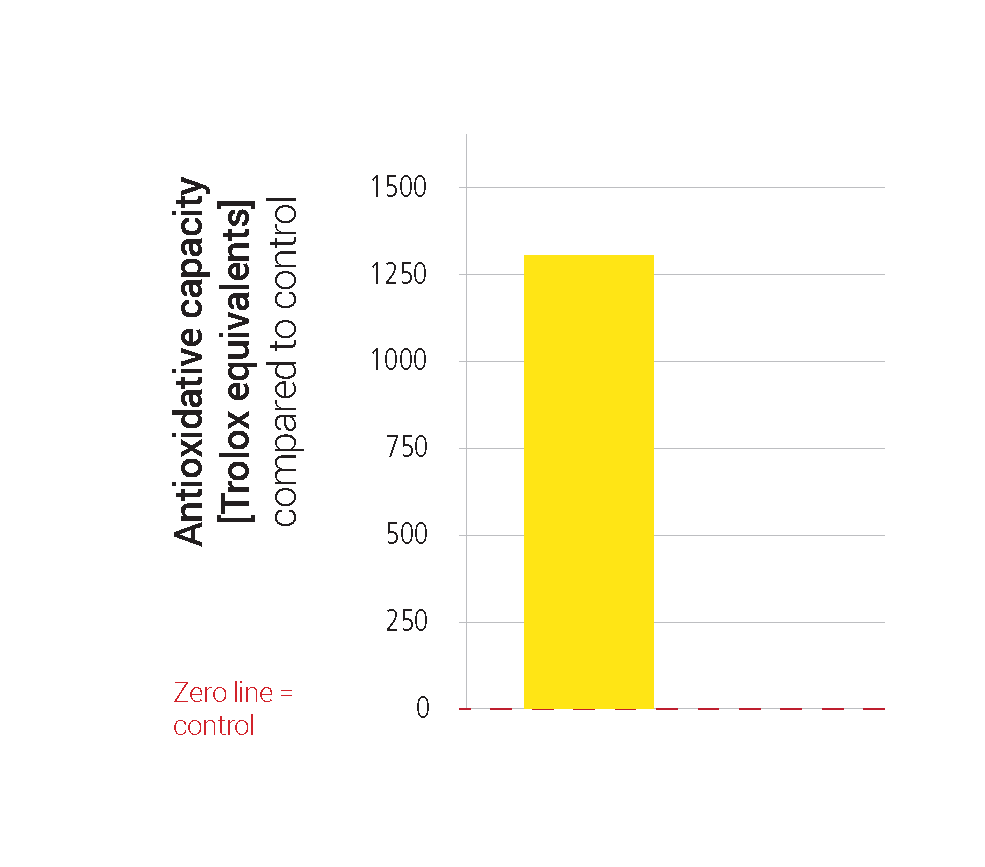Increased protection against free radicals
Exhaust gases, polluted water and environmental toxins are typical sources of pollution that generate free radicals. These aggressive, highly reactive molecules are able to significantly damage our cells. An excess of free radicals generates so-called "oxidative stress". This can lead to disease and premature aging. If the free radicals are reactive oxygen molecules (ROS), this process is also referred to as "biological rusting".
Antioxidants are preferred reactants for ROS. They are able to neutralize them and thus render them harmless. The most important antioxidants we can supply through nutrition are micronutrients, such as vitamins and polyphenols.
The Dr. Rath Research Institute has investigated the antioxidant capacity of various micronutrient combinations. Researchers investigated the antioxidant capacity using a standardized measurement method (Trolox Equivalent Antioxidative Capacity, TEAC). The results are given in so-called "Trolox equivalents". To assess the antioxidant capacity, values of 170, 1430 and 1300 Trolox equivalents were determined.




 Deutsch
Deutsch
 Español
Español
 Français
Français
 Italiano
Italiano
 Polski
Polski

